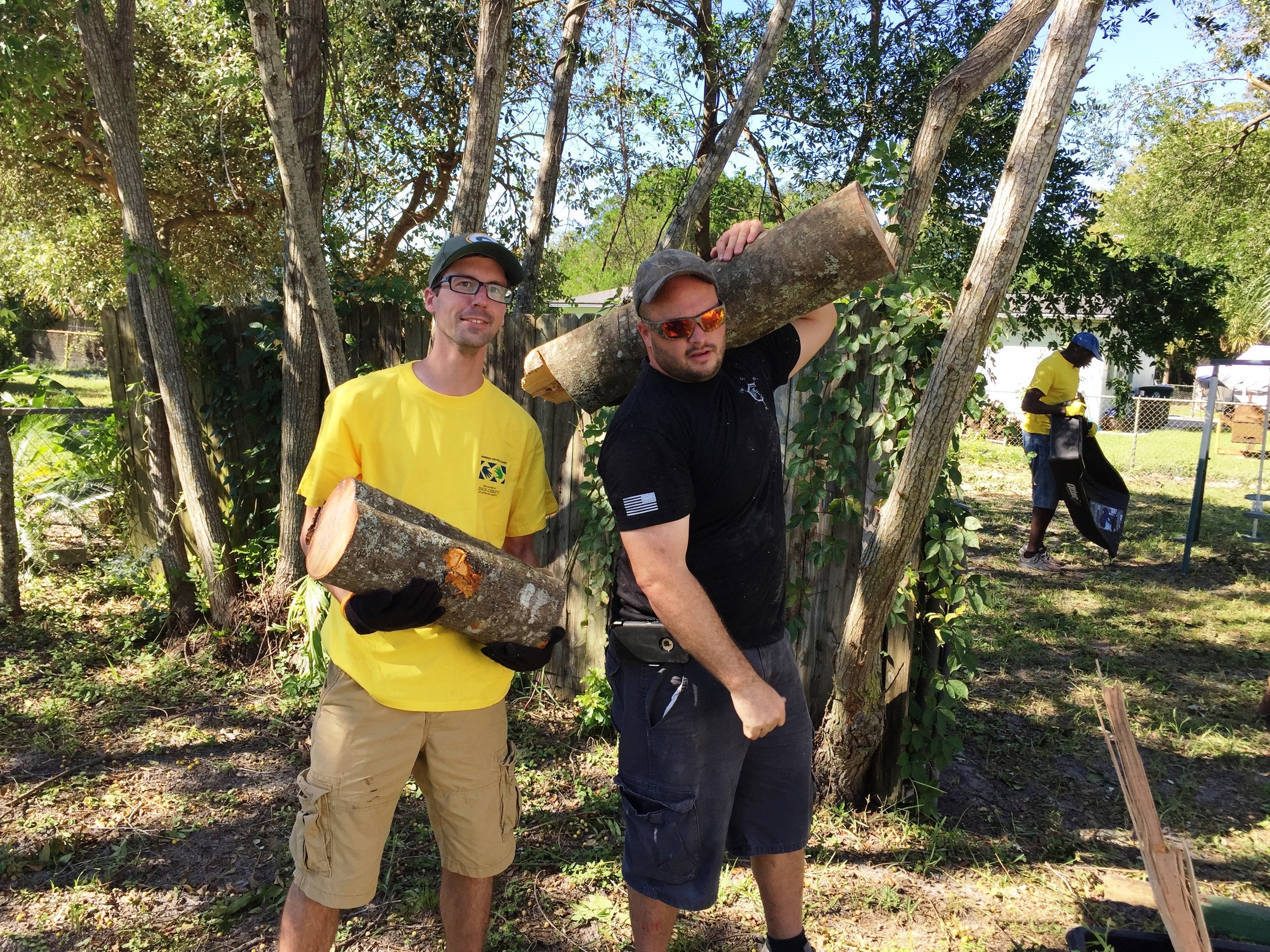Crisis Cleanup aids local hurricane recovery efforts
Special to the Recorder
Ponte Vedra resident Bret Smith has cleaned up after a lot of hurricanes, but he has never seen an operation as efficient as the clean-up effort following Hurricane Matthew.
“We have it down to a science,” Smith said. “We have all the necessary tools, all the manpower and the organization to respond within hours to someone’s call.”
The organizers of the effort, Crisis Cleanup, call themselves a “work order management program.”
Hurricane victims who needed help cutting up trees, raking debris from their yards, cutting out drywall from flooded areas or putting tarps over their roof simply call an 800 number (800-451-1954) and describe their needs. A real person immediately answers the phone and takes down key information: the location of the affected property and what type of work needs to be done. Disaster victims can also go to the Crisis Cleanup website (www.crisiscleanup.org) and enter their request online.
Once a request is received by Crisis Cleanup, volunteers from a variety of organizations “claim” the work order. With the address in hand, the volunteers head to the specified location with the necessary equipment and perform the requested clean-up.
“My friend made the call on Saturday and by Sunday two giant oak trees that fell in my yard had been cut up and stacked at the curb,” said Elizabeth Butler, who lives off Beach Boulevard.
More than 900 relief organizations have registered with Crisis Cleanup, which has assisted with 48 disasters since July 2012. The organizations are responsible for finding their own volunteers and for providing all the equipment needed for the cleanup. Crisis Cleanup simply provides the website to match those with clean-up needs to the volunteers who want to help.
Smith, who is the leader of a congregation of The Church of Jesus Christ of Latter-day Saints, ended church early two Sundays in a row and took members of his congregation out to fill work orders.
“Our church hired a semi to deliver chain saws, rakes, wheel barrels, tarps, bottled water, even gloves,” Smith said. “I took several members of my congregation over to our building on Hendricks Ave., we gathered our supplies and headed out to work.”
Cleaning up after Hurricane Matthew was far different than other hurricane clean-ups, Smith noted. Not only was it an exceptionally well organized cleanup effort, he said, but the devastation was far less centralized.
“When we cleaned up after Hurricane Andrew, every house in a neighborhood was affected. As far as you could see there were people on rooftops securing blue tarps.”
Clean up after Katrina was disgusting, Smith said. “Everything was flooded so we had to scoop muck out of the houses and cut away the drywall.”
The fact that Hurricane Matthew stayed off shore made a huge difference as to the extent of the devastation in Jacksonville, he added.
Ashley Buckman, a member of Smith’s congregation, said she found the clean-up efforts “fun.”
Her friends agreed.
“I had been feeling kind of down,” Callie Workman said. “When I got out and did something for someone else, I felt so good. It’s just so great to hang out with good people regardless of what you’re doing.”
Mandarin resident Judis Crews and his crew spent the day in the yard of a woman who was highly suspicious when they first showed up.
“You could feel the distrust,” he said. “Before long, she realized we were there out of love and we didn’t want anything in return. When we left she was in tears. It was very powerful.”
Shalei Miller has been in Jacksonville for the past 18 months serving as a missionary for The Church of Jesus Christ of Latter-day Saints. Cleaning up after the storm, she said, was one of the highlights of her mission.
Said Miller: “The more you serve, the more you put others first, the more you become like our savior, Jesus Christ.”







